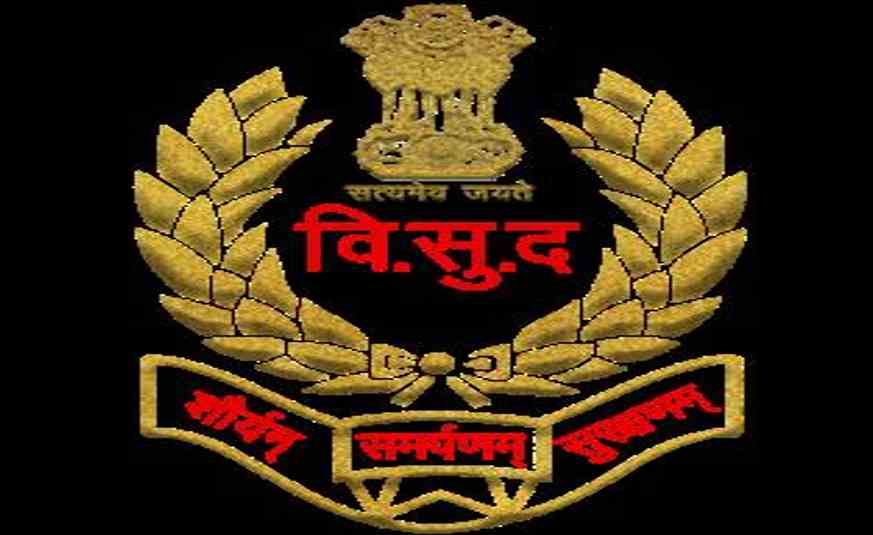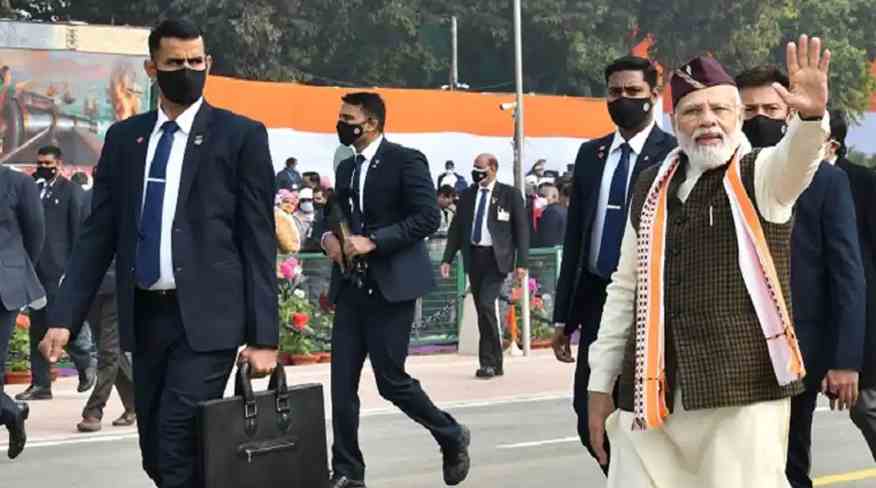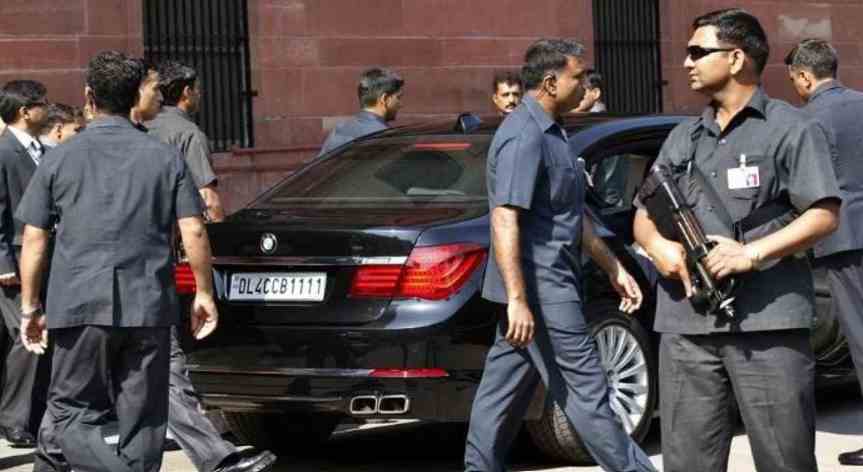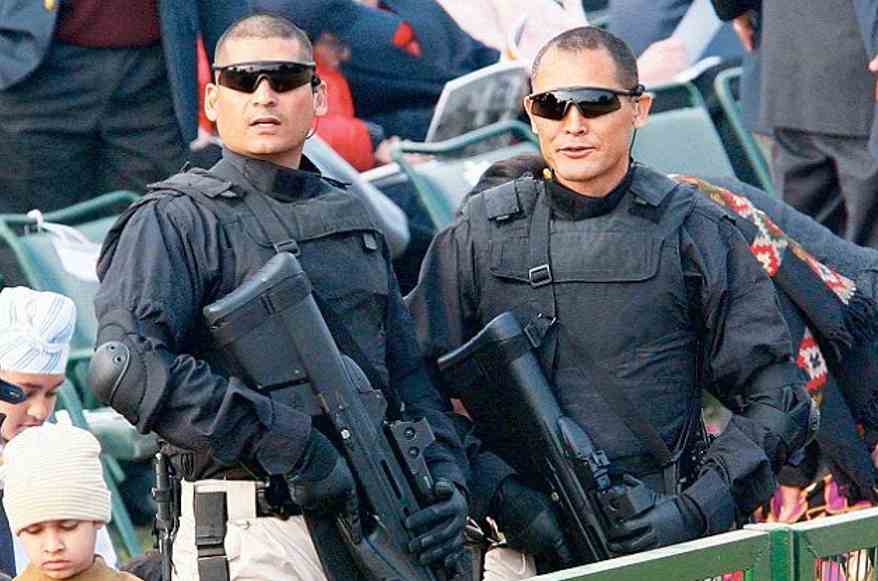- Umang Sagar
- Defence, Recent article
Special Protection Group

What Is SPG?
The SPG (Special Protection Group) is an organization of the Government of India that is accountable to the protection of the prime minister of India only. In some cases, the Prime minister’s family is granted protection too. The Prime minister cannot deny the protection whereas his/her family members can. The Special Protection Group always issues security to the prime minister in India and abroad. The SPG authority included protecting the prime minister’s immediate family members who might be residing anywhere within the country. This was before the introduction of the Special Protection Group (Amendment) Act, of 2019. At present, only the prime minister is under the protection of the SPG.
The SPG commandos are well equipped with a standardized bulletproof vest of level three. The vest usually weighs 2.2 kg. Equipped with the latest and advanced technologies, they are constantly in touch with their team with the help of communicating devices like walkie-talkies and earpieces.
The Special Eligibility Criteria And Training

The commandos in SPG are NOT directly recruited in the agency. They are chosen from BSF, CISF, CRPF, ITBP, other Para-military forces, and the police. The selection procedure of an SPG Commando involves four steps: A personal Interview by a panel of 5 persons, A psychological test, a written test, and a Physical test.
The commandos are specially trained for three months. If a commando fails to qualify for two tests which are held weekly, then they are sent back to their parental post. An officer can stay in the SPG for three years only. After serving for 3 years they are sent back to their parental organization.
The Special Protection Group (Amendment) Act, 2019

The Special Protection Group Act is an act proceeded by the Indian Parliament in 2019 which diminishes special protection group cover to only the Prime Minister, former Prime Minister, and their family members. The duration of protection for former prime ministers is five years if they are occupying the allotted residence.
The bill was instigated in Lok Sabha on 27 November 2019. The bill was then introduced to Rajya Sabha by Amit Shah (Home minister) on December 3, 2019 and was passed on the same day. It was approved by the President and thus became an Act.
The Establishment

The Special Protection Group was raised in 1985. Prior to 1981, the security of the Prime Minister was the duty of the Special Security District of the Delhi Police. It was supervised by an officer of the rank of Deputy Commissioner of Police (DCP). This representation was acquired from the United Kingdom where the Prime minister of the United Kingdom is protected by the Metro Police of London.
The special Task Force was established by the Intelligence Bureau (IB) in October 1981. The sole responsibility was to provide transportation security and road custodian to the prime minister while moving in and out of New Delhi. An assessment was undertaken by a committee of secretariats of the ministry of home affairs after the assassination of prime minister Indira Gandhi by her two Delhi Police guards in October 1984. In the assessment, it was always decided to consign the security of the prime minister’s elite unit under the direct authority of the STF to provide the Prime Minister immediate security.

The Birbal Nath Committee was established by the Ministry of Home Affairs on February 18th, 1985, to investigate the situation and make recommendations to the government about prime ministerial security. The Committee made its suggestion for the establishment of the Special Protection Unit, an autonomous organization for prime ministerial protection, in March 1985. By executive decree, the President of India created 819 positions for the department under the Cabinet Secretariat on March 30, 1985. The group’s name was changed to Special Protection Group, and its director was promoted to Inspector General of Police in the Indian Police Service.
The first Director of the SPG was S. Subramaniam, who was formerly the Joint Director (VIP Security) at the Intelligence Bureau. The creation of the SPG initially required a new allocation of duties to several entities connected with the Prime Minister’s protection. With only 819 employees, the new organization was unable to fully secure the Prime Minister’s person, office, home, and dependents, and was forced to rely on the Delhi Police and state police units for transportation and logistics. New proximal security procedures were added to the Blue Book, an existing guidebook for the Prime Minister’s protection. The coordination, gathering, and distribution of intelligence affecting the Prime Minister’s security during domestic visits became within the purview of the Intelligence Bureau and the relevant State Police under the new arrangements. The Prime Minister would thereafter have two tiers of physical security provided by the State Police and the SPG. From April 1985 to June 1988, the SPG was in operation under the authority of the executive decree that established it. To formalize the terms of the directive, the Rajiv Gandhi administration passed the Special Protection Group Act that year. The Act only allowed security for the Prime Minister and his close family members at the time.
As Leader of the Opposition, Rajiv Gandhi lost his SPG security when he left power in 1989. Despite the grave danger to his life posed by his government’s military engagement in the Sri Lankan Civil War, this took place. Gandhi was killed by a suicide bomber from the Liberation Tigers of Tamil Eelam, a Sri Lankan terrorist group, in May 1991 at a political event in Tamil Nadu. Following his murder, the SPG Act was changed to grant previous prime ministers and their close relatives SPG security for ten years after leaving office. The IB would undertake a security review before the end of this time to assess the threat posed by a protectee and the necessity for extensions (which would last five years). Due to their involvement in the Indian National Congress, Sonia Gandhi, Rahul Gandhi, and Priyanka Gandhi all received SPG protection for a period of 28 years (until 2019).
The SPG Is Divided Into Four Categories

Operation: The Operations division performs protection duties. There are sub-elements in the operations branch such as the communications wing, technical wing and Transport wing.
Training: The Training division provides ongoing training for both new and existing employees. The SPG instructs personnel in close protection techniques, marksmanship, anti-sabotage checks, communication, and other operational facets related to influencing security. The training program is consistently examined and revised to successfully counter threats from more recent locations and to reflect the threat perception at the time.
Intelligence and Tour: The Intelligence and Tour division undertakes Threat assessment, personnel-related internal intelligence, character and history checks, and other related work. Threat assessment is the practice of analyzing the seriousness of a threat.
Administration: The administration section negotiates with Human Resources, finance, and other related matters.
Supervision
The Government of India has “general superintendence, direction, and control” over the SPG. The Director, who oversees “the leadership and supervision” of the force, is formally known as the Joint Secretary (Security) in the Cabinet Secretariat. The director of the SPG has been an IPS officer since the organization’s creation and currently holds the position of Director General of Police.
Personnel is not directly hired by the SPG. Instead, recruits are selected from the Central Armed Police Forces and Railway Protection Force’s enlisted ranks. These employees are eligible to seek deputation to the SPG and go through extensive physical and psychological testing as well as increased security screening. Deputation to the SPG is typically for five years, but the Director may decide to extend it. Officers of the SPG who oversee direction and coordination are selected from the IPS.
Responsibilities

- The sole person now covered by SPG is India’s current prime minister, Narendra Modi. SPG protection was granted to Sonia Gandhi for 28 years, from 1991 to 2019. This protection covered Sonia Gandhi, her two children, Raihan and Miraya, as well as her children Rahul and Priyanka Gandhi. Rajiv Gandhi and Indira Gandhi, both former prime ministers, were killed in assassinations in 1984 and 1991, respectively, despite ongoing concerns for their safety from the Indian government.
On November 8th, 2019, the Indian government revoked their SPG security credentials and replaced them with Z+ Security. This choice was made after the government removed an SPG detail for Manmohan Singh, Modi’s predecessor. Additionally, Jashodaben and Heeraben, Modi’s mother and estranged wife, had their SPG security details revoked in accordance with the Special Protection Group (Amendment) Act of 2019 that same year. The Act changed the SPG’s authority to defend the current prime minister’s “parents, wife, and children” to include “immediate family members residing (with the prime minister) at his official house.”
According to Indian legislation, SPG protectees are not required to go through personal security checks at any airport in India and are allowed access to VIP lounges at airports run by the Airports Authority of India. Additionally, they are not subject to security checks while accessing specific government structures, such as the residence and office of the prime minister.
Weapons And Vehicles Used By The SPG

- FN Herstal
- FN SCAR
- FN P-90
- FN Herstal five – seveN
- Glock 19 and Glock 17
- FN Herstal P90
- IOF Modern Sub Machine Carbine
- The prime minister’s motorcade incorporates a convoy of vehicles. Primary vehicles consist of two Mercedes- Maybach S650 Guard, three armoured BMW 7 series sedans four armoured Range Rovers, 8 to 10 MBW X5s, Six Toyota Fortuners, and Two Mercedes Benz sprinter ambulances.

Air Transport Includes:
Air India One, Boeing 747-400, Boeing 777-300 ER, Air Force One, Embraer-135, Boeing Business jet 737s, Indian Air Force Lockheed C-130 and Mi-17 Helicopters.
- Dog Squad includes the elite K9, Mudhol hounds, Labradors, Belgian malinois, and German shepherds.
Top 13 Facts About The Special Protection Group
SPG was established in 1985 on the recommendation of the Birbal Nath Committee.
The Special Protection Group protects beneficiaries both in India and abroad.
Former Prime Minister’s close relatives can choose to opt-out of the protection provided by SPG.
A police inspector or higher rank Indian police officer leads a Special Protection Group.
The protection provided to the former Prime Minister and her family residing in headquarters is only valid for up to five years from the date he/she resigns.
The Special Protection Group operated without law for three years from 1985 to 1988, after which the Rajiv Gandhi Government passed a law to give the agency a strict legal form.
Before 1981 From the time of independence, the Delhi Police Special Security District was responsible for the security of the Prime Minister.
If desired, protection can be extended indefinitely for an additional 5 years.
Birbal Nath Committee was established by the Ministry of Home Affairs on February 18th, 1985, to investigate the situation and make recommendations to the government about prime ministerial security.
SPG was created after the assassination of former Prime Minister Indira Gandhi. Parliament passed the SPG (Amendment) Act (1988) dedicating the group to protecting the Prime Ministers of India.
There are four sub-branches in the SPG: Operation, Training, Intelligence, and Tour and Administration
SPG officers have been so far awarded 01 Shaurya Chakra, 43 President’s Police Medals for Distinguished Service, and 330 Police Medals for Meritorious Service.
SPG has completed 37 years of glorious history.



